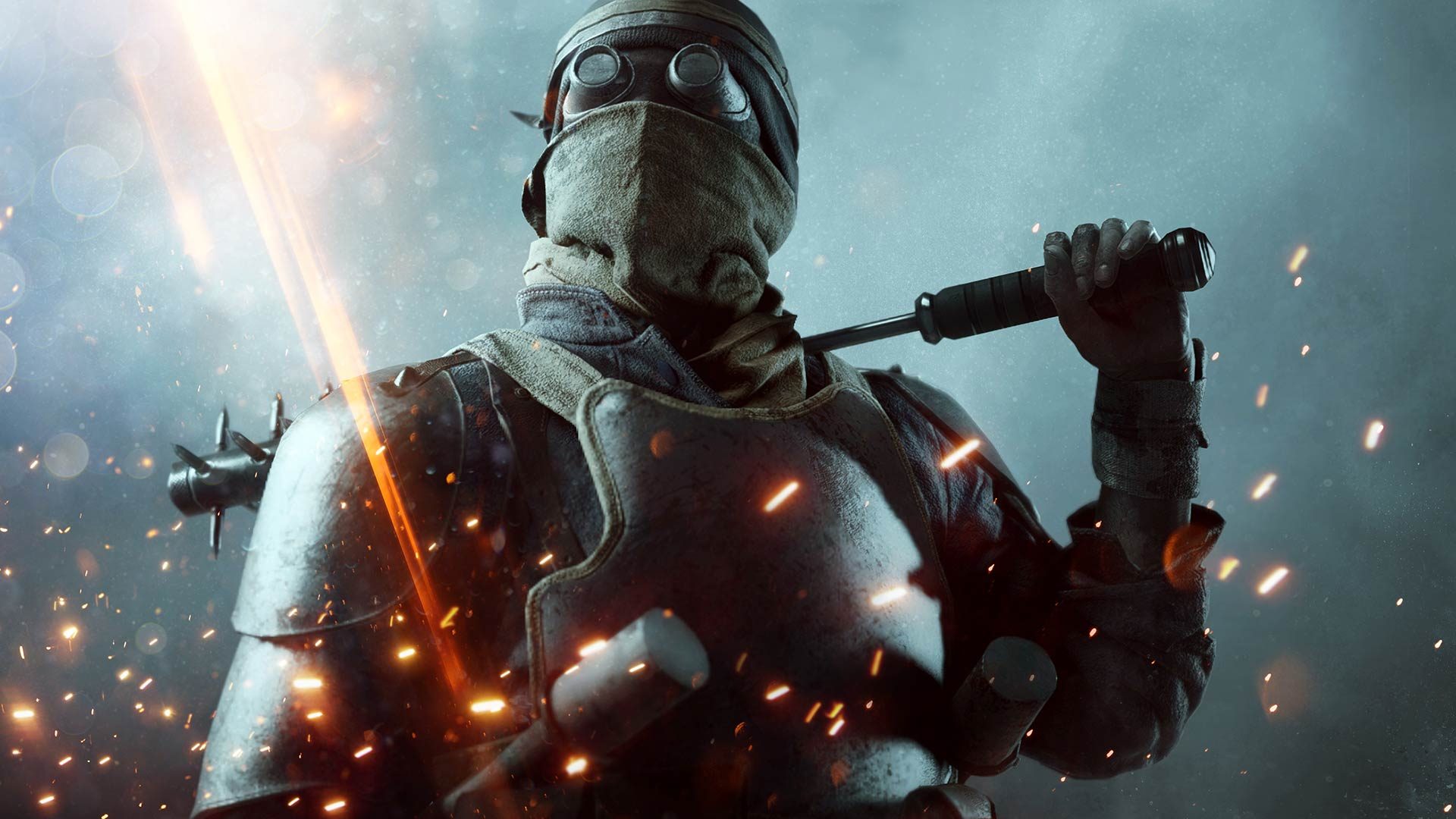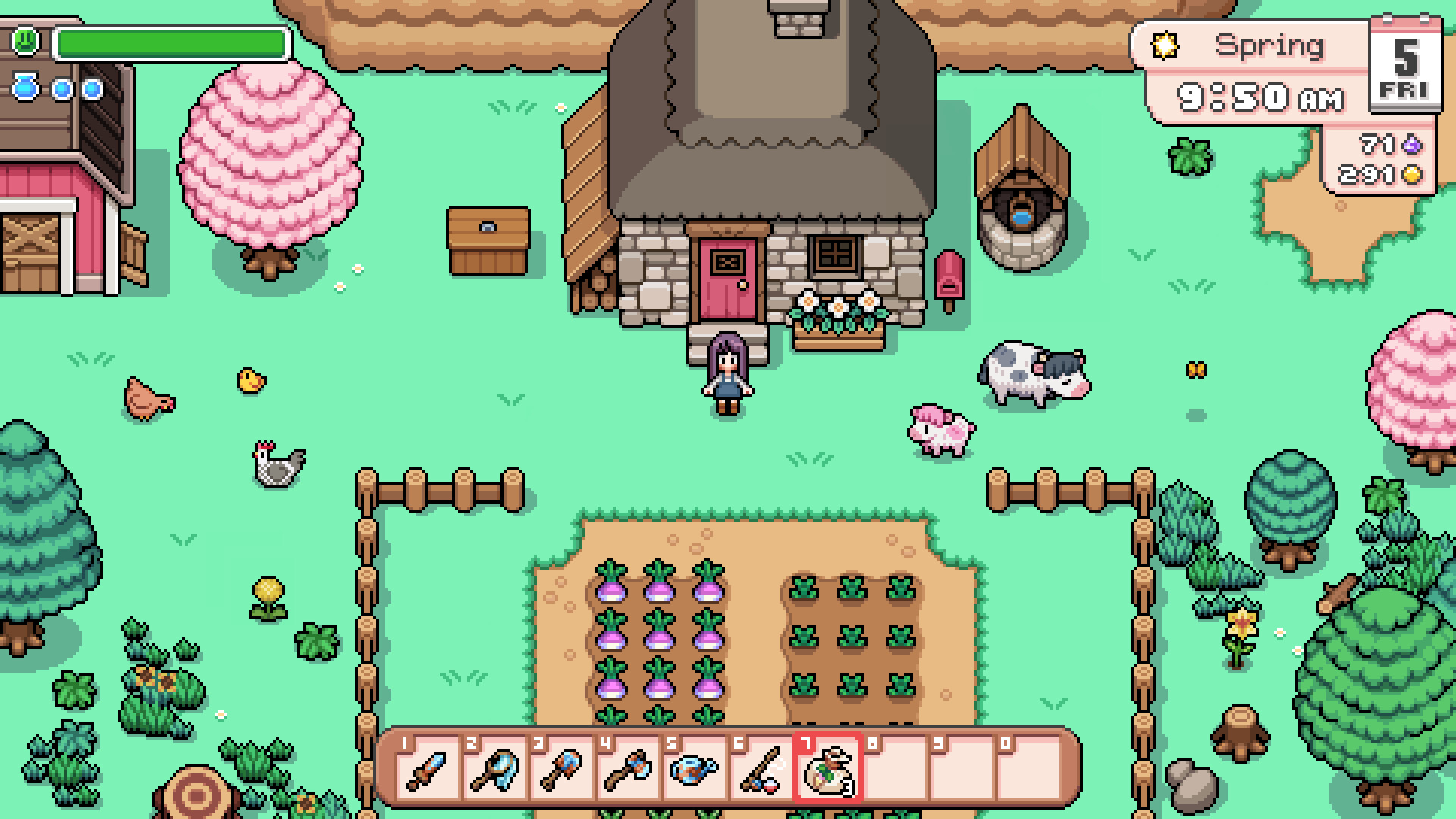
Kunitsu-Gami: Path of the Goddess Review
In an time when innovative games are coming out constantly, it’s exciting that I’ve truly never played anything quite like Kunitsu-Gami: Path of the Goddess. It’s an otherworldly mix of action-strategy and tower defense set in a mystical feudal Japan. But while that unique setup may be what grabs your attention, Kunitsu-Gami’s execution on those ideas is also engaging, fun, and downright fascinating.
Kunitsu-Gami’s story is told quietly yet effectively, using essentially no dialogue. Mt. Kafuku has been corrupted by defilement and the “Seethe,” a representation of demons, spirits, and yokai. Your goal as Soh, the guardian of the maiden Yoshiro, is to lead her safely down a path on the mountain so she may perform her duty, rescuing villages and their inhabitants along the way. Secondarily, you must also defeat especially powerful Seethe to secure the stolen masks that contain the power of the Goddess, which then allows you to assign villagers to different roles to assist you.
It’s not a complicated story, but the handful of cinematics inspired me to care about Yoshiro, as well as the small, seemingly insignificant yet intimate act of watching her enjoy traditional sweets collected by repairing villages. In fact, while Soh is who you are directly controlling, it feels odd to deem them the main character – they very much feel like a personality-less extension of Yoshiro, the true protagonist of this tale.
Either way, the story isn’t meant to be the star of Kunitsu-Gami. That honor goes to its intricate enemy design, beautiful settings, and the clever action-strategy twist it puts on tower defense gameplay. Each stage is split into two phases: Day and night. During the day phase, your goal is to collect crystals by purifying defilement, rescue corrupted villagers, and then use your crystals to carve the Spirit Path through the stage for Yoshiro so she may reach the torii gate at the end to purify it. Meanwhile, at night, the Seethe emerge from those corrupted torii gates to wreak havoc and destroy the villages on the mountain.
New mechanics are introduced regularly enough to keep things interesting.
Yoshiro can never reach the end of a stage in a single day, so you must be prepared to protect the maiden from Seethe attacks with Soh’s sword and other abilities. Thankfully, you’re not alone against the hordes of Seethe, as you can place the villagers you’ve saved during the day along your path in order to optimally defend Yoshiro. You can even change where they are stationed in real-time during battles, and as you progress through the stages and defeat bosses, you’ll also collect masks which allow you to change a villager’s role – be that to the attention-drawing Sumo, the long-ranged Archer, or one of my favorites, the Ascetic, which slows down Seethe with barriers. You can even collect a resource called Musubi to upgrade a role’s abilities, which can mercifully be undone as often as you’d like, which turns what could have been an anxiety-inducing choice into lots of fun experimentation.
At first, this day-night loop was so easy I worried it might become too repetitive, but I quickly changed my tune after the third boss proved to be a skill check. After this point, new mechanics were introduced regularly enough to keep things interesting, including contraptions to help defend Yoshiro, new goals beyond just getting her from point A to point B, and greater enemy variety. It seemed every stage also brought a new Seethe with widely varied attack patterns and purposes, which not only shook things up nicely, but effectively increased the difficulty. It encouraged a broader train of strategic thought, ranging from which villager roles to upgrade to which contraptions to repair.
The entirety of Kunitsu-Gami is a practice in resource management, encouraging plenty of careful consideration without being over taxing mentally. The crystals you collect are used both to create Yoshiro’s Spirit Path and to give villagers roles, so I had to weigh the pros and cons of having more powerful villagers or potentially finishing a stage sooner. There’s also a limited amount of time in each day, and since it takes time to repair defensive contraptions, there’s only so many you can choose to save. Choose wrong, or be too indecisive, and you could end up with no extra defenses at all. Even just deciding where to stop Yoshiro on a path could vastly change the difficulty of the coming night.
Banal Base Building
Completing a stage unlocks a base in that stage’s setting, where you can then go to manage upgrades, manually save, collect offerings, and repair the structures of the village to earn additional rewards. At first I found these to be a nice, quiet reprieve between what could be the hectic action stages and bosses. There are a wide variety of cute animals to interact with, a delicate piano playing, and happy villagers meandering about. However, it soon became apparent I basically had to return to each base multiple times to complete repairs between stages in order to collect the Musubi that allowed me to upgrade villager roles.
Each base has multiple structures to repair which each require a certain number of villagers, but there are only so many villagers available to assign, and time must pass for the repairs to be completed. There were times between stages when I backtracked to three or four different bases to keep up on collecting rewards and instructing repairs, and I eventually found myself tired of repeating that process, no matter how charming the presentation. Still, this frustration was ultimately just a mildly irritating hiccup that didn’t prevent me from largely enjoying the flow of Kunitsu-Gami.
There’s a lot of replayability here, too. Each stage has hidden chests and three side objectives that can reward you with Tsuba Guards that grant special abilities, Mazo Talismans that grant passive buffs, and the highly necessary Musubi upgrade material. Because you can skip cutscenes, fast forward the day phase, and don’t have to re-rescue villagers to have them in your arsenal, replaying stages is much less of a slog than it could be. My only qualm is that the earlier stages can be a bit boring during the night phase, considering how easy they become with your newfound strength. However, you can always rely on the villagers to defend Yoshiro for you while you do some laundry or something – she’ll speak up if she needs help. After finishing the roughly 20-hour story, there is New Game+ option that lets you retain everything you’ve obtained so far (including the base repairs, thank the Goddess) and introduces enticing new rewards to chase.
Fantastical Yet Authentic
Capcom calls Kunitsu-Gami a “kagura action-strategy” game – a genre label of its own creation, but one that actually suits it a great deal. Kagura can literally translate into “god entertainment” or “god music,” and is a known form of Shinto ritual dance with origins tied to the folktale that inspired another Capcom game, Okami.
The Shinto-influenced ideas touched upon in Kunitsu-Gami aren’t entirely foreign to me, but the depth of its presentation is. The attention to detail here is fascinating – for example, the collectible sweets were made in real life by the famous Tsuruya Yoshinobu, a 220-year-old confectioner in Kyoto, Japan, before being scanned and turned into in-game models. It’s apparent that a great deal of care was put into making everything authentic despite the mythological twist put on this feudal-Japanese setting, from the fabrics to the objects to even the choreography.
Even the most fantastical parts, the Seethe monsters, are so incredibly detailed I could spend an ungodly amount of time just looking at their fascinatingly grotesque designs. Unlockable plaques allow you to examine their in-game models up close, and each includes a little tale that occasionally reads like a short from Scary Stories to Tell in the Dark. The plaques for the animals and villagers are much less interesting but welcome nonetheless, adorable on their own as they often depict Yoshiro or the villagers interacting with the subject animal. Why there is so much detail here I can’t really tell you, but the thoughtfulness is tangible.
Finally, I have to mention the diverse color palette being used – broad, colorful, and yet somehow cohesive in everything from the environment to the enemies themselves. Fantastic, but not so unrealistically vibrant to push it entirely into the spirit realm. Kunitsu-Gami isn’t the most graphically impressive action game I’ve seen, but its art direction is a thing of beauty.








